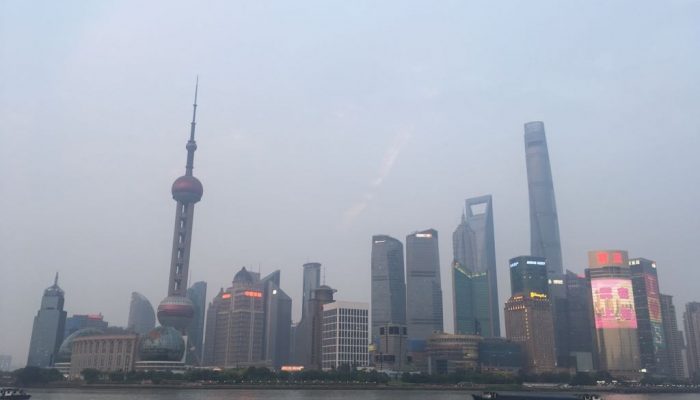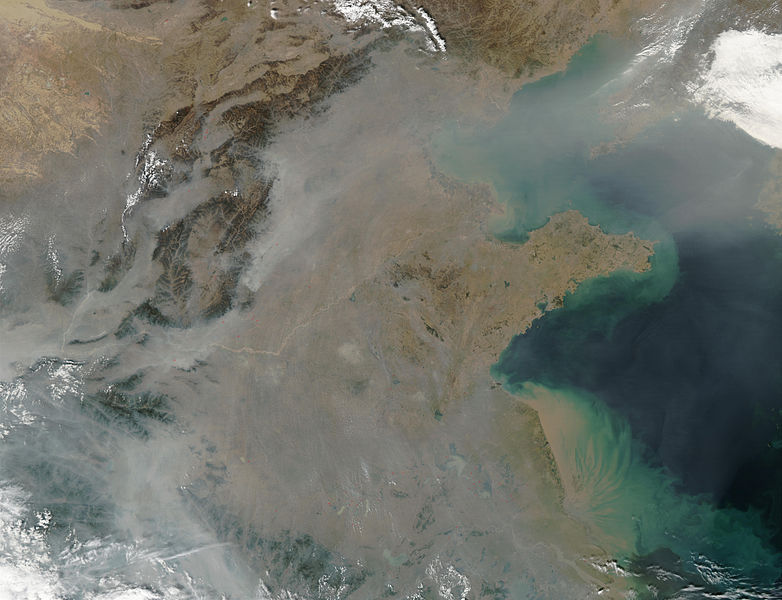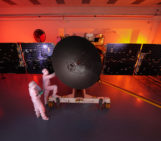
The nighttrain from Shanghai to Beijing is a comfortable affair. The train is new and clean. My travel partner and I can charge our phones and relax on soft beds. The railway is almost frictionless, and overall the experience is similar to any ride in the West. But outside, as the vehicle roars through the early night, things become increasingly hazy. As we reach further out from the Shanghai metropolis there is a slow realisation that the urban air-polluted luminous glow would not be left behind.
For those who have yet to visit China, it’s hard to truly convey the extent of the air pollution problem. During our time in Shanghai the smog was all encompassing; we could feel it settle on our skin and invade our lungs with every breath. Outdoors there was no escaping it. The Chinese air pollution forecast designated the risk level ‘moderate,’ and we wondered what ‘high’ would entail.
Inside the train we lay on opposite bunks. I fixed the window blind ajar to keep a sleepy eye on nighttime tree tops and apartment blocks as we dart by. We passed endless residential towers as we edged by cities we would never become familiar with, some of which appear desolate, almost entirely unlit, but I can’t imagine for long. Once we passed directly under a giant coal fired power station and by countless fields illuminated in the haze by nocturnal agriculture. There are trucks loading at 3 a.m. Along this 1200 km stretch – think Paris to Madrid – the foggy dim light rarely ceded.

This true-color image over eastern China was acquired by the Moderate Resolution Imaging Spectroradiometer (MODIS), flying aboard NASA’s Aqua satellite, on Oct. 16, 2002. The scene reveals dozens of fires burning on the surface (red dots) and a thick pall of smoke and haze (greyish pixels) filling the skies overhead. Credit: NASA (via Wikimedia Commons)
My traveling companion is a children’s doctor. She raised her concerns: what chance do children born in these cities today have of living long healthy lives? Will they live full lives breathing in this industrial gunk? She explained to me that respiratory diseases kill because of chronic inflammation in the lungs, similar to that experienced from exposure to cigarette smoke. Such inflammation can in time lead to reduced lung function and, consequently, increased pressure on the heart due to less oxygen intake. Then, as the heart works harder to introduce the oxygen the body needs, it can fail, leading to premature death.
Estimates on health issues relating to long-term exposure to air pollution in China are hard to come by. It’s also hard to assess how dangerous such exposure is, but it’s likely China will experience an epidemic of respiratory related illnesses in the near future. One recent study reported that the Chinese population will suffer about 1.6 million premature deaths each year due to air pollution. As well as the human cost of lost loved ones, these air pollution related health risks will become a tremendous financial burden on the national health system. In 2007, The World Bank estimated that the annual health cost of outdoor urban air pollution in China for 2003 was between 157 and 520 billion Chinese yuan, around 1-3% of China’s gross domestic product.
However, this year China announced it would, for the first time, introduce a human health air pollution watchdog. According to Chinese officials, this is the first attempt by the national government to address how pollution affects public health. One day, scientists will be able to report on how generations born today can benefit from such endeavours. But for now, the future remains uncertain.
This is Part 1 of a two-part series on the impact of air pollution in China and the country’s steps to usher a clean era for the 21st century. Keep an eye out for Part 2, appearing next week on Geolog.
By Conor Purcell, a Science & Nature Writer with a PhD in Earth Science
Conor Purcell is a science journalist with a PhD in Earth Science. He is the founding editor of www.wideorbits.com and can be found on twitter @ConorPPurcell and some of his other articles at cppurcell.tumblr.com.
Editor’s note: This is a guest blog post that expresses the opinion of its author, whose views may differ from those of the European Geosciences Union. We hope the post can serve to generate discussion and a civilised debate amongst our readers.



